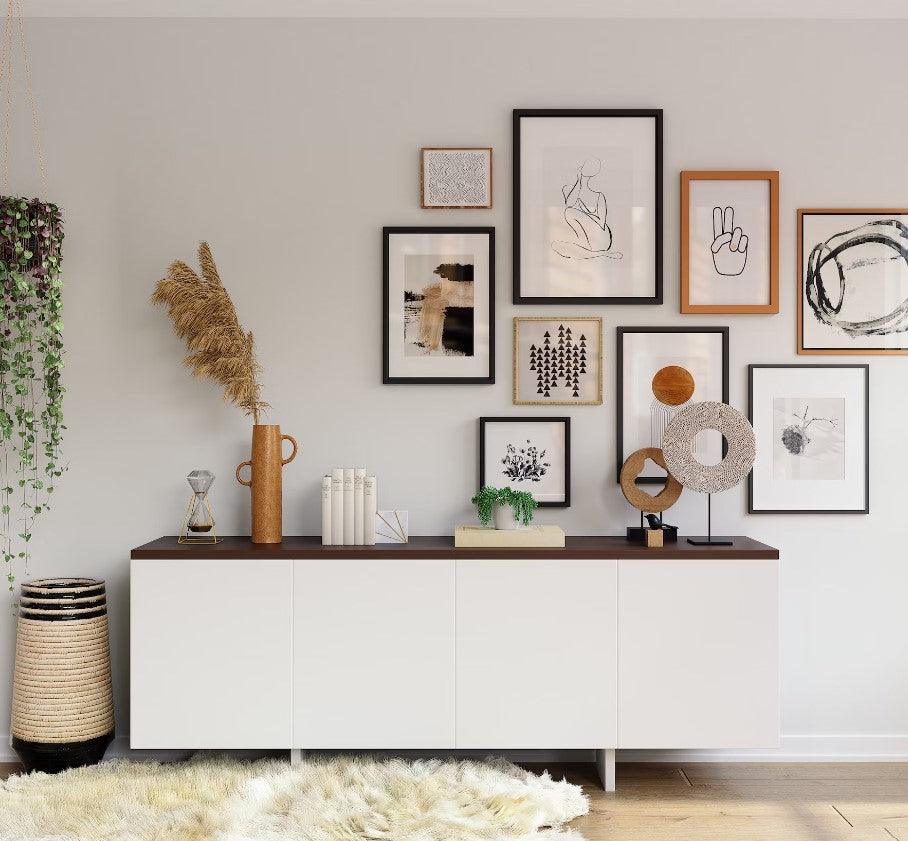What’s the ONE Framing Tool You Can’t Live Without?
We polled working framers—from boutique shops to high-volume pros—and the answers ranged from beautifully old-school to gloriously high-tech. Below you’ll find the crowd favorites, why they matter, and quick tips you can use today. Plus: fun facts, a rapid buyer’s guide, and a handy FAQ at the end.
Quick Highlights from the Poll
- Cutting champs: Hand glass cutters (Fletcher green & gold, swivel heads) and single-edge razor blades were staples across shops.
- Mat magic: A modified mat scribe, wooden mat guides, and yes—CMC/CNC systems—unlock precision and creativity.
- Joinery & clamping: Band clamps, corner vises, Masterclamp V5 Pro, and classic Morso/double miter setups made the podium.
- Unsung heroes: Point drivers, wire cutters, tape measures, long-neck flathead screwdrivers, and coffee ☕.
- Shop brain: POS software was called out as “can’t live without”—because the best craft still needs clean ops.
The Fan Favorites (With Real-Shop Commentary)
1) The Awl: “Emotional Support Stabby”
It marks, pokes pilot holes, aligns, and persuades. One framer has used the same awl for 20 years. Talk about trust.
- Why it’s essential: Accuracy & speed for small, fussy tasks.
- Pro tip: Keep a cork on the tip in drawers—save your hands & your sanity.
2) Hand Glass Cutters (Fletcher Green & Gold, swivel heads)
Multiple pros said they prefer cutting glass by feel on the bench—faster, cleaner, and less cumbersome than wall cutters for many jobs.
- Why it’s essential: Immediate control and ultra-clean scores.
- Pro tip: Keep a tiny oiler handy and change wheels before the score quality drops.
3) Single-Edge Razor Blades
The swiss-army knife of the frame shop: trimming, scraping, shaving fuzzy bevels, and popping tape liners.
- Why it’s essential: Infinite uses, pennies per blade.
- Pro tip: Retire used CMC blades to the “precision chores” jar—perfect mini tweezers/scrapers.
4) Mat Tools: Modified Scribes, Wooden Guides & CMCs
Hand tools keep you nimble; CMC/CNC opens up French mattes, inlays, and wild geometry at scale.
- Hand tools shout-outs: Modified mat scribes, wooden mat guides—beloved for French mattes.
- Machines named: Valiani Nexus; general call-outs for CMC/CNC as “creativity engines.”
- Pro tip: Track blade life by sheets cut—not days—to keep bevels crisp.
5) Joinery & Clamping: Band Clamps, Corner Vises, Masterclamp V5 Pro
When moulding quality varies, band clamps and corner vises save the day. One framer swears by the Masterclamp V5 Pro (and the maker even offers overhauls).
- Why it’s essential: Squeeze out micro-gaps; keep corners tight while glue cures.
- Pro tip: Label strap clamps by size; pre-stage them near your joining zone.
6) Cutting Heavyweights: Morso & Double Miter Saws
Morso for quiet, crisp, controlled miters; double miter saws for speed and high throughput.
- Why it’s essential: Precise corners are non-negotiable for premium work.
- Pro tip: Blade maintenance is profit maintenance—schedule it like rent.
7) The AMP Sander (Fillet/Join Sanding)
One veteran called it the tool that “bailed me out the most” for three decades. Still running 100%.
- Why it’s essential: Micro-adjusts imperfect miters into invisible joins.
- Pro tip: Sand lightly; let the abrasive do the work to avoid rounding.
8) Point Drivers, Wire Cutters & Tape Measures
The quiet core of everyday production. A point driver locks assemblies; wire cutters do… well, everything; the tape measure is your constant reality check.
- Pro tip: Dedicate a tape to frame outside dims and another to glazing/backing—save calibration brain cycles.
9) Wall Cutters, Flush Staplers & Specialty Stretching Tools
Wall glass/board cutters, flush staplers (canvas stretching pros love them), and corner jigs turn chaos into clean lines.
10) Shop Ops: POS Software, Coffee, Employees… and Customers
Multiple framers listed POS systems, teams, and yes—coffee—as “can’t live without.” Craft + ops = sustainable profit.
Rapid Buyer’s Guide: Start Here
- On a budget: Razor blades, awl, quality handheld glass cutter, band clamp, point driver.
- Leveling up: Morso or double miter saw, wall cutter, corner vises, dedicated sanding tool.
- Scaling production: CMC/CNC for mats, robust POS/inventory, standardized clamps/jigs at each station.
- Always invest in: Blade quality, dust management, lighting, and ergonomics.
Fun Facts from the Shop Floor
- Old tools have loyalty: several pros kept 20–30-year-old gear because it still performs flawlessly.
- “Retired” blades never die—framers repurpose them for micro-tweezers, scrapers, and spot fixes.
- Some tools are unicorns: one framer guards a herd of discontinued strap clamps like treasure.
- Best safety tool? Bandaids. (Kidding… kind of.)
Level Up the Look (After the Tools)
Once the corners are tight and the bevels are spotless, finish with frames that fit the art and space:
- Black Picture Frames for gallery-clean contrast.
- Gold Picture Frames for warm, classic elegance.
- Wood Frames to echo furniture & natural textures.
- Metal Frames for modern, slim profiles.
- Colorful Frames to match brand palettes or color-drenching schemes.
- Shadow Box Frames for jerseys, medals, fabrics & 3D memorabilia.
FAQs: Custom Framing & Shop Tools
Do I need a CMC/CNC to start a frame shop?
No. Many shops start—and thrive—with hand tools and smart jigs. A CMC/CNC becomes a game-changer when you scale volume, increase design complexity, or need tight repeatability across teams.
Morso vs. Double Miter Saw—how do I choose?
Morso: ultra-precise manual nibbling cuts, quieter, lower maintenance. Double miter saw: speed for production with excellent accuracy but higher cost and blade upkeep. Choose based on throughput and budget.
What are the true “must-have” hand tools?
A quality glass cutter, razor blades, awl, point driver, band clamp, wire cutters, and a rock-solid tape measure. Add corner vises and a sanding block for invisible joins.
How do I keep miters tight and invisible?
Start with accurate cuts (well-maintained blades), use consistent clamping pressure, and finish with light corrective sanding (AMP sander or hand block). Don’t rush glue cure times.
Is a wall cutter worth it if I already cut glass on the bench?
It depends. Many framers love the bench feel for speed and control. Wall systems shine for large sheets, safety, and repeatability—especially with foam board and acrylic.
Where can I find frames that match my project or décor?
Browse curated collections by style and finish: Black, Gold, Metal, Wood, Colorful, and Shadow Box.
Final Thought
What’s “can’t live without” often isn’t fancy—it’s the tool you reach for every single hour. Dial in the fundamentals, then add machines that multiply your creativity and throughput. Your corners (and your customers) will thank you.


Leave a comment